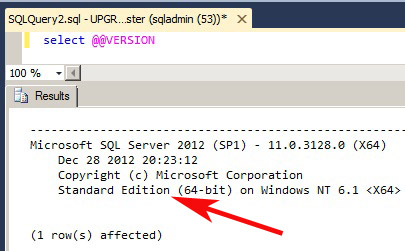

- Sql server 2012 enterprise edition licensing install#
- Sql server 2012 enterprise edition licensing license#
- Sql server 2012 enterprise edition licensing iso#
- Sql server 2012 enterprise edition licensing windows#
If these components are installed, location matters. There are other components such as Reporting Services, Analysis Services, Integration Services, and so on. SQL Server is more than a relational database engine.
Sql server 2012 enterprise edition licensing license#
Server + CAL allows you to license only the server running SQL Server but you need to account for any device or user (the CALs) that will connect to SQL Server. Server + CAL is a bit outdated and only applicable to Standard Edition. Today, most customers using Standard or Enterprise editions of SQL Server use core-based licensing. Using a server license along with CALs is exactly what it sounds like: you license the VM for SQL Server and each device (Device CAL) and/or user (User CAL) accessing SQL Server requires a license. Core-based, which can be used by either Enterprise and Standard, and server + client access license (CAL) which only is applicable for Standard.Ĭore-based licensing means that you are accounting for all the cores used in each virtual OSE (VM). There are two licensing models for SQL Server depending on the edition.
Sql server 2012 enterprise edition licensing iso#
Using the wrong ISO not only has licensing implications but can also impact performance.
Sql server 2012 enterprise edition licensing install#
For example, downloading the wrong ISO of Enterprise Edition could limit you to only 20 cores, or you could install Standard instead of Enterprise.
Sql server 2012 enterprise edition licensing windows#
When deploying with Windows Server, use the right installation ISO from Microsoft. You do not pay per instance of SQL Server you can install as many instances as you would want inside a given VM which hosts an OSE (Linux or Windows Server), up to the supported maximum if SQL Server is licensed properly. This concept of an instance not only plays into how SQL Server works, but also how it is licensed. There are some shared components that would be common to all instances as well. Most customers do not, and should not, deploy that many instances in a single VM.Įach instance has its own system (and user) databases and some dedicated binaries. For Always On Failover Cluster Instances (FCIs), that limit is up to 25 and for standalone, 50. On Linux, you can only have one instance of SQL Server per VM and on Windows Server you can have up to the supported maximum.

SQL Server InstanceĪn installation of SQL Server is an instance. You can no longer buy licenses for SQL Server 2017 and earlier. If you are deploying an older version of SQL Server for some reason such as an older application, you will be purchasing SQL Server 2019 licenses with downgrade rights. If you are reading Microsoft’s documentation, they refer to an operating system environment (OSE). This blog will not cover the licensing/support scenarios for the underlying operating system.

A license for Windows Server must be purchased whereas some distributions of Linux that are supported for SQL Server may not need an OS license but require support agreements. If applicable, you must also account for licensing the operating system. To see all the differences between the editions of SQL Server, read the official Microsoft documentation topic “ Editions and supported features of SQL Server 2019 (15.x)”. Express Edition has no licensing requirement but is limited in scalability and features. Developer Edition cannot be used for production. Production implies the use of Enterprise, Standard, or Web editions of SQL Server. First Things FirstĪll production deployments of SQL Server must be licensed properly according to the Microsoft SQL Server 2019 Licensing Guide. In this first installment, I’ll cover the basics of licensing SQL Server as well as per-VM licensing. With the recent releases of both VMware vSphere 7 and SQL Server 2019 as well as changes announced to SQL Server licensing, this is a good time to discuss licensing for SQL Server when virtualized using VMs with VMware vSphere.


 0 kommentar(er)
0 kommentar(er)
